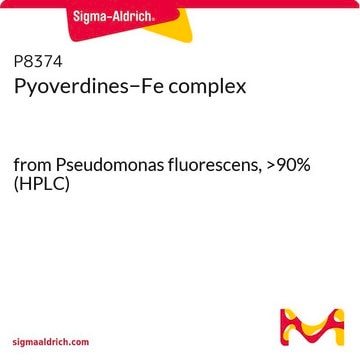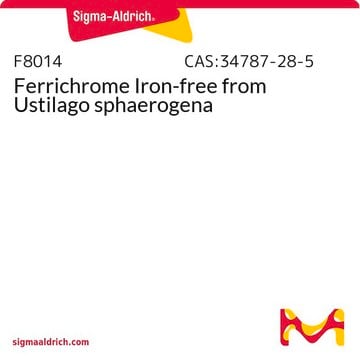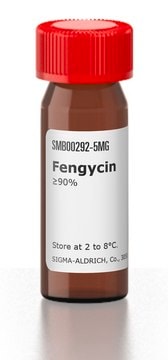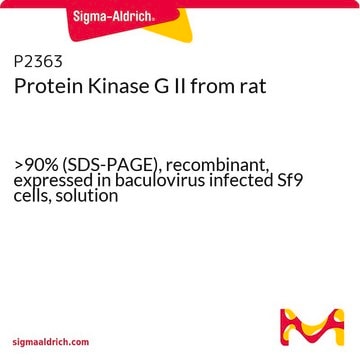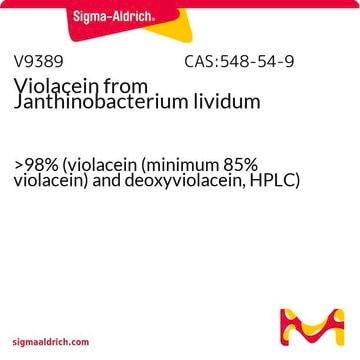P8124
Pyoverdines
from Pseudomonas fluorescens, >90% (HPLC)
Sinónimos:
Pyoverdine Detection, Pyoverdine Protein, Siderophore Protein
About This Item
Productos recomendados
origen biológico
Pseudomonas fluorescens
Nivel de calidad
Análisis
>90% (HPLC)
formulario
powder
solubilidad
H2O: ~10 mg/mL
Condiciones de envío
wet ice
temp. de almacenamiento
−20°C
¿Está buscando productos similares? Visita Guía de comparación de productos
Aplicación
- in tryptophan fluorescence quenching to determine its binding to neutrophil-gelatinase-associated lipocalin (NGAL)
- to detect pyoverdine diffusion surrounding siderophore-conjugated monobactam (MB-1)-resistant colonies in chelexed, dialyzed Mueller-Hinton broth (CDMHB)
- for synchronous fluorescence spectra of purified pyoverdine
Acciones bioquímicas o fisiológicas
Forma física
Producto relacionado
Código de clase de almacenamiento
11 - Combustible Solids
Clase de riesgo para el agua (WGK)
WGK 3
Punto de inflamabilidad (°F)
Not applicable
Punto de inflamabilidad (°C)
Not applicable
Certificados de análisis (COA)
Busque Certificados de análisis (COA) introduciendo el número de lote del producto. Los números de lote se encuentran en la etiqueta del producto después de las palabras «Lot» o «Batch»
¿Ya tiene este producto?
Encuentre la documentación para los productos que ha comprado recientemente en la Biblioteca de documentos.
Los clientes también vieron
Nuestro equipo de científicos tiene experiencia en todas las áreas de investigación: Ciencias de la vida, Ciencia de los materiales, Síntesis química, Cromatografía, Analítica y muchas otras.
Póngase en contacto con el Servicio técnico
